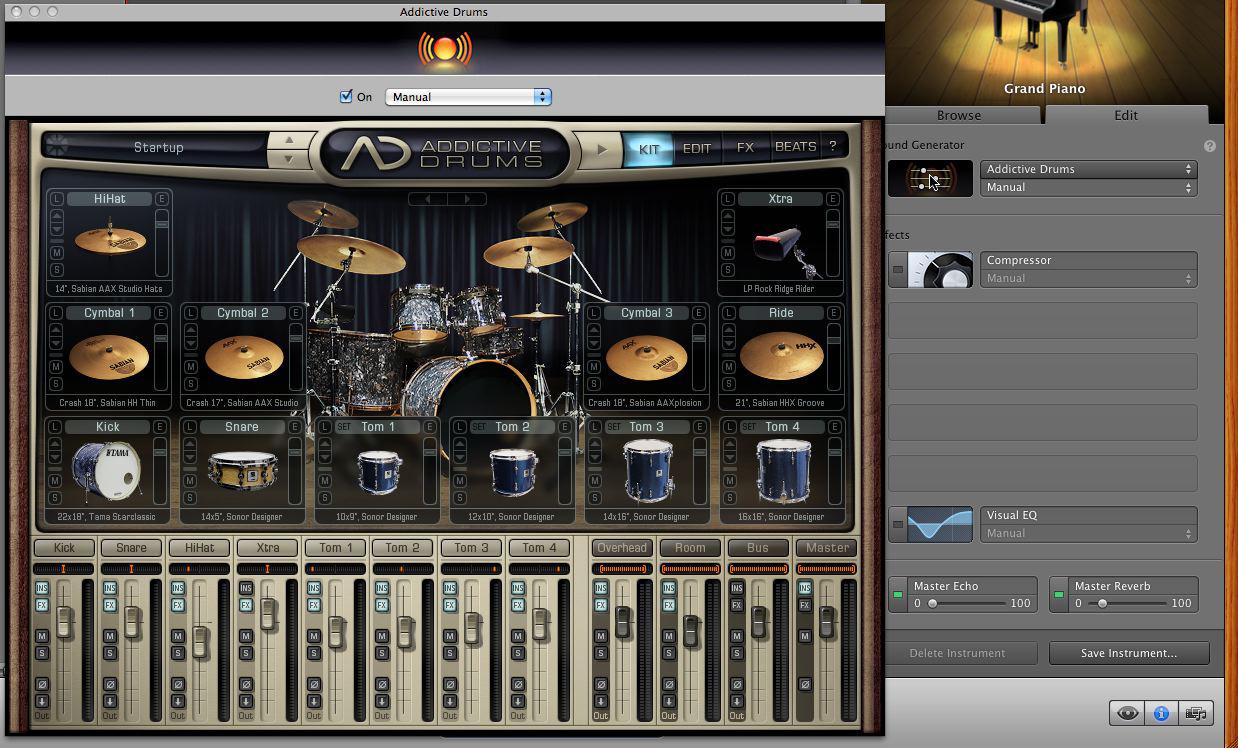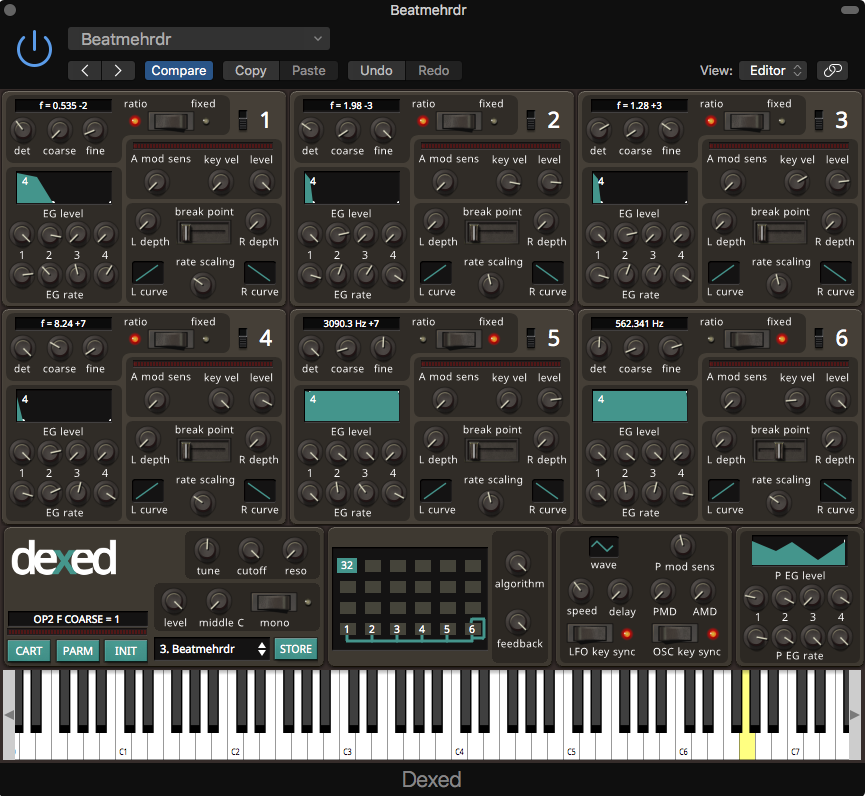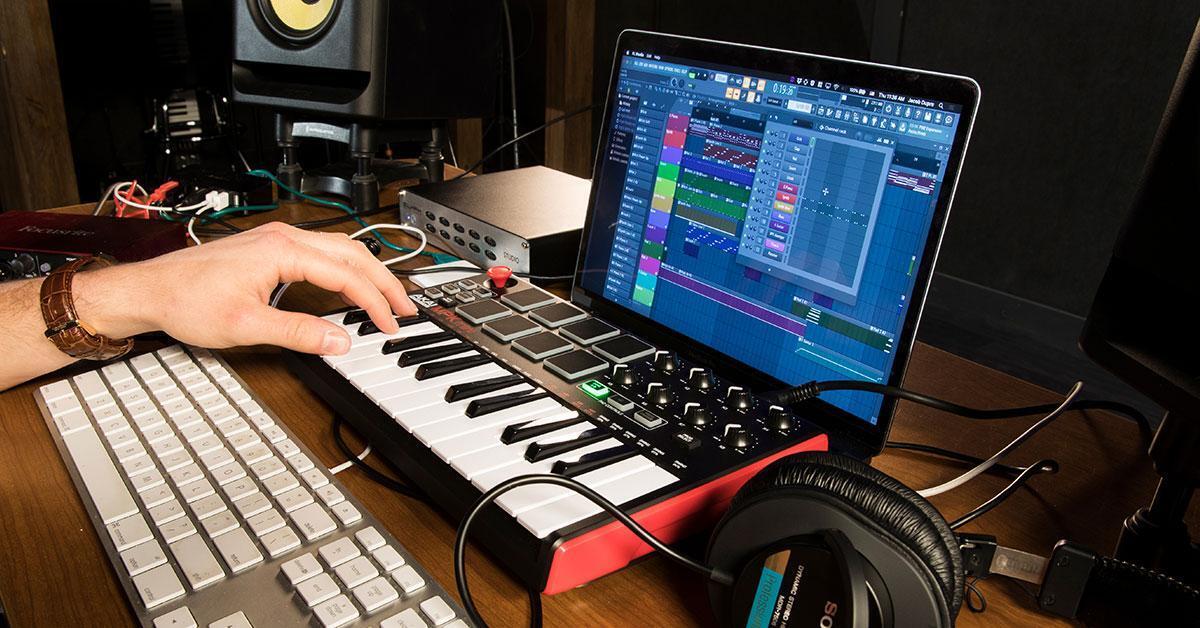Classic orchestra instruments in one VST – and all for free, of course. With over 40 instruments, 1 drum kit, and 10 internal combos DSK Overture free orchestra VST gets your theatrical tracks covered. Almost every aspect of its instruments is tweakable, it has MIDI automation, some implemented sound effects and multimode filter. GarageBand is a line of digital audio workstations for macOS, iPadOS, and iOS devices that allows users to create music or podcasts. GarageBand is developed and sold by Apple for macOS, and is part of the iLife software suite, along with iMovie.Its music and podcast creation system enables users to create multiple tracks with pre-made MIDI keyboards, pre-made loops, an array of various. Best GarageBand Windows Alternatives Listed! Most of these GarageBand Windows alternatives are available for free and a few of them are paid. Preferred by almost every Windows user, Audacity is one of the finest audio editing software out there. It’s free, easy to use, and has a very simple user interface.
- Free Garageband Instruments And Effects
- Free Midi Instruments For Garageband Loops
- Free Vst Instruments Garageband
- GarageBand comes with a number of free virtual instruments such as electric piano, drums, guitar, strings, percussion and more. Once you’ve selected a virtual instrument, you’ll want to make sure that your PEDpro is detected as a MIDI device in GarageBand.
- UVI’s instrument host is free to download and comes with a small selection of free demo instruments for you to test out, including electric piano, analogue strings, jazz drums, Spanish guitar and synth bass. It also has some built-in effects and an onboard arpeggiator and mixer.
Should you choose this app?– GarageBand is currently one of the best Digital Audio Workstations in the music industry. It is quite intriguing how an application this compact offers users the infinite potential to create appealing music that is fresh and out of the box. The software has been extracted from the all-encompassing Logic Pro X software. Developed by Apple INC, GarageBand also provides users the much-required security. It can be easily downloaded from the Apple Store free of cost. The user interface of the application is such that from novice to professionals, users of all competencies can create amazing tracks and compose their music. Detailed steps for the same are laid out below in this guide.
To start creating music, launch the GarageBand software on your device. As it runs on a PC, iPad, or iPhone, you can choose either to start making your project. The interface and control positions might differ a little for each device but the fundamental structure of GarageBand remains the same.
For windows users this guide will refer to the PC version of GarageBand: https://garagebandonpc.com
Click on the ‘New project’ option as this guide will tell you how to create a new song from scratch. If you want to import certain tracks or melodies from an existing track, you can do so by clicking on the ‘Import’ button and choosing the project you want to import from. After you have opened a new project, you will get four track selection options.
The first option is inserting a MIDI track (software instrument). The next two options are plugging in a microphone to record the vocals track or a guitar (both lead and bass) to record the melody or the bassline. All other plugin instruments can also be connected and recorded by choosing this track. The last option is that of a virtual drummer track. The details of which will be discussed later in the guide.
A song composition contains four major sections. The melody, the bassline, percussion, and layering. It is always easier to begin with the layer section. For this, select the Software Instrument track. Choosing this track does not necessarily mean you have to have a MIDI instrument on you. The Musical Typing feature of GarageBand is particularly well-known for such situations. Using this feature, you can convert your device keyboard into a MIDI keyboard. Go to Preferences > Musical Typing to enable this feature.
Free Garageband Instruments And Effects


The MIDI track will open up with a panel to the left and a panel down below. The panel to the left of the track is the Music Library that has in it stored tones of various musical instruments. Starting from Guitar tones to classical piano to bass tones, the library has it all and more. The panel down below is the control panel or the mixer. It has knobs for the basic music effects like Bell, Treble, Drive, bass Volume, Ambience, Gain, and Reverb. A section of it also contains the Keyboard Sensitivity slider that becomes relevant when the Musical Typing feature is used.
As we will be recording a layer, select Synthesizer > Pad from the library. Choose a pad (layer) tone of your choice. The media player on top of the window has the record button on it. When you are ready, record the layer section of your composition. The Key Signature and Metronome options will help you keep your track on beat and scale. It will be quicker if the mixing is done when all the tracks are ready.
Moving on to the next track that will be the melody part of the composition, depending on whether you want to play the melody on the MIDI or plug in your guitar, choose the Track type. Let us use a guitar to explore the range of facilities offered by GarageBand. Use an audio interface to plug in your guitar into the system and select the Guitar Track. Switch on the metronome. To select the tone, if you have a processor on you, well and good. If not, you can use the GarageBand virtual amplifier to set the tone for your guitar. It is recommended to use a physical processor as tone quality is much better. Similar to the last track, click on the Record button and record your track.

The bassline of the song will also follow a similar pattern. The bassline can also be recorded with the MIDI Instrument by going to the Music Library and choosing a base tone. However, connecting a bass guitar will give you a much better effect. Plug in your bass guitar by choosing a plugin track. Like the last track, adjust the tones from your processor and record the bassline.
GUIDE TO COMPOSING AND MIXING OF TUNES AND TRACKS:
At this stage, if you want to add a vocals track, you can do so. Connect your microphone to the device and select the Vocal Recordingtrack. Thereafter, record the vocals part and place it on one of the track rows.
Last but not least, the track that will bind all the other parts of your composition together is the Drummer track. Physically recording the drum sound is quite a difficult task logistically. Therefore. GarageBand has a feature called the virtual drummer. These are pre-recorded drum patterns where the time-signature can be set as required. Each virtual drummer adds a different flair to the groove. Choose a drummer from the list and set the time signature accordingly.
Once all the tracks have been recorded, it is time to mix and master the audio. The first step is to position the tracks so that they are in perfect sync. Following this comes the mixing part. As mentioned above, the Smart Controls panel with the various knobs can be put to use now. Adjust the various nuances of the tracks by twisting and turning the knobs.
It is very difficult to set out a guide for the perfect mix. It all depends on the musician’s taste. The more minutely you hear the tracks, the better you will be able to understand what best is needed for you. Fix the audio gain and the pitch if you feel your vocals track requires pitch correction (auto-tune). The pitch correction slider will be able to the left of your screen when you select the Editor button from the top left of the window.
To mix and control the individual parts of the drum, open the Automation feature from the Mix button on the menu bar. Select the drum track and several parameters displaying various drum parts will appear. Adjust the volume and boost.
Once you feel the mix is complete, listen to the entire track again. There is always something that you will have missed out initially. When the track has been perfected, export it as uncompressed. Also, save the project in the ‘My Songs’ section of GarageBand.
You can also try this application now on your PC and see if it fits you and your needs check the guide here.
For the visual lesson for the tutorial, check the video below. Please write to us if you have any queries and doubts.
What is Audiobus? — Audiobus isan award-winning music app for iPhone and iPad which lets you useyour other music apps together. Chain effects on your favouritesynth, run the output of apps or Audio Units into an app likeGarageBand or Loopy, or select a different audio interface outputfor each app. Route MIDI between apps — drive asynth from a MIDI sequencer, or add an arpeggiator to your MIDIkeyboard — or sync with your external MIDI gear.And control your entire setup from a MIDI controller.
Download on the App StoreAudiobus is the app that makes the rest of your setup better.
Free Midi Instruments For Garageband Loops

Hello everyone,
I have iPhone 6s Plus and trying to find a way to convert audio to midi with Audiobus in Garageband.
I run iSymphonic orchestra in Garageband by using Audiobus and it makes audio records as well... Is there any way to send midi signals inside Garageband by using Audiobus with a third party app?

Thanks
Comments
Free Vst Instruments Garageband
You can't send MIDI out from Garage Band, but what you can do is use another MIDI app and send it's MIDI out to iSymphonic, and then record the audio in Garageband.
Garageband has great limitations as an iOS DAW, which is puzzling after all this time. It's essentially an isolated dead end road, which is a shame because it could be really useful on iOS with just a few relatively minor additions.
@1P18 said:
You can't send MIDI out from Garage Band, but what you can do is use another MIDI app and send it's MIDI out to iSymphonic, and then record the audio in Garageband.Garageband has great limitations as an iOS DAW, which is puzzling after all this time. It's essentially an isolated dead end road, which is a shame because it could be really useful on iOS with just a few relatively minor additions.
Apple and it's unfortunate strategies... Many thanks for your opinions.
- edited December 2015
I use GarageBand to start stuff off. Often the idea is originated there. What I’ve given up trying to do is rescue any of it for further use. I use it to rough out the sketch, build a little maquette or prototype, practice the pacing of what needs to be where with placeholders. Then once it’s got something, even though by then it’s over into Logic Pro to look at and play with, I don’t attempt to use anything it made. I just start each piece all over again, manually, in a proper situation. It often doesn’t resemble what I sketched out, but it benefits from it.
It remains one of the most accessible dumbed-down means of imitating music for the people.
@u0421793 said:
I use GarageBand to start stuff off. Often the idea is originated there. What I’ve given up trying to do is rescue any of it for further use. I use it to rough out the sketch, build a little maquette or prototype, practice the pacing of what needs to be where with placeholders. Then once it’s got something, even though by then it’s over into Logic Pro to look at and play with, I don’t attempt to use anything it made. I just start each piece all over again, manually, in a proper situation. It often doesn’t resemble what I sketched out, but it benefits from it.It remains one of the most accessible dumbed-down means of imitating music for the people.
One man's maquette is another man's bozzetto...
@JohnnyGoodyear said:
@u0421793 said:
I use GarageBand to start stuff off. Often the idea is originated there. What I’ve given up trying to do is rescue any of it for further use. I use it to rough out the sketch, build a little maquette or prototype, practice the pacing of what needs to be where with placeholders. Then once it’s got something, even though by then it’s over into Logic Pro to look at and play with, I don’t attempt to use anything it made. I just start each piece all over again, manually, in a proper situation. It often doesn’t resemble what I sketched out, but it benefits from it.It remains one of the most accessible dumbed-down means of imitating music for the people.
One man's maquette is another man's bozzetto...
Statue again?
GarageBand is my only DAW (at this point) and with Audiobus compatibility and its nifty UI I can't much see wanting to move to any of the others I've auditioned (that maybe an iPad screen could make better). There are a number of things I'd love to see added - MIDI/control changes (at least THEIR version of it) as an OUT app for AB, more instruments, more onboard control over recorded audio - but it gets me where I need to be.
You could try and run a Garageband track through MIDIMorphosis and send the midi to another app. May work.
I use this kind of stuff with figure tracks and it works well, if the melody ain't full of FX and such@senhorlampada said:
You could try and run a Garageband track through MIDIMorphosis and send the midi to another app. May work.
I use this kind of stuff with figure tracks and it works well, if the melody ain't full of FX and suchThanks for all comments... If i can solve issue about Audiobus with new iOS 9.2 i will try...
Sampler which is inside GarageBand also helps for midi signals but sound quality is not good as much as audio recording....
